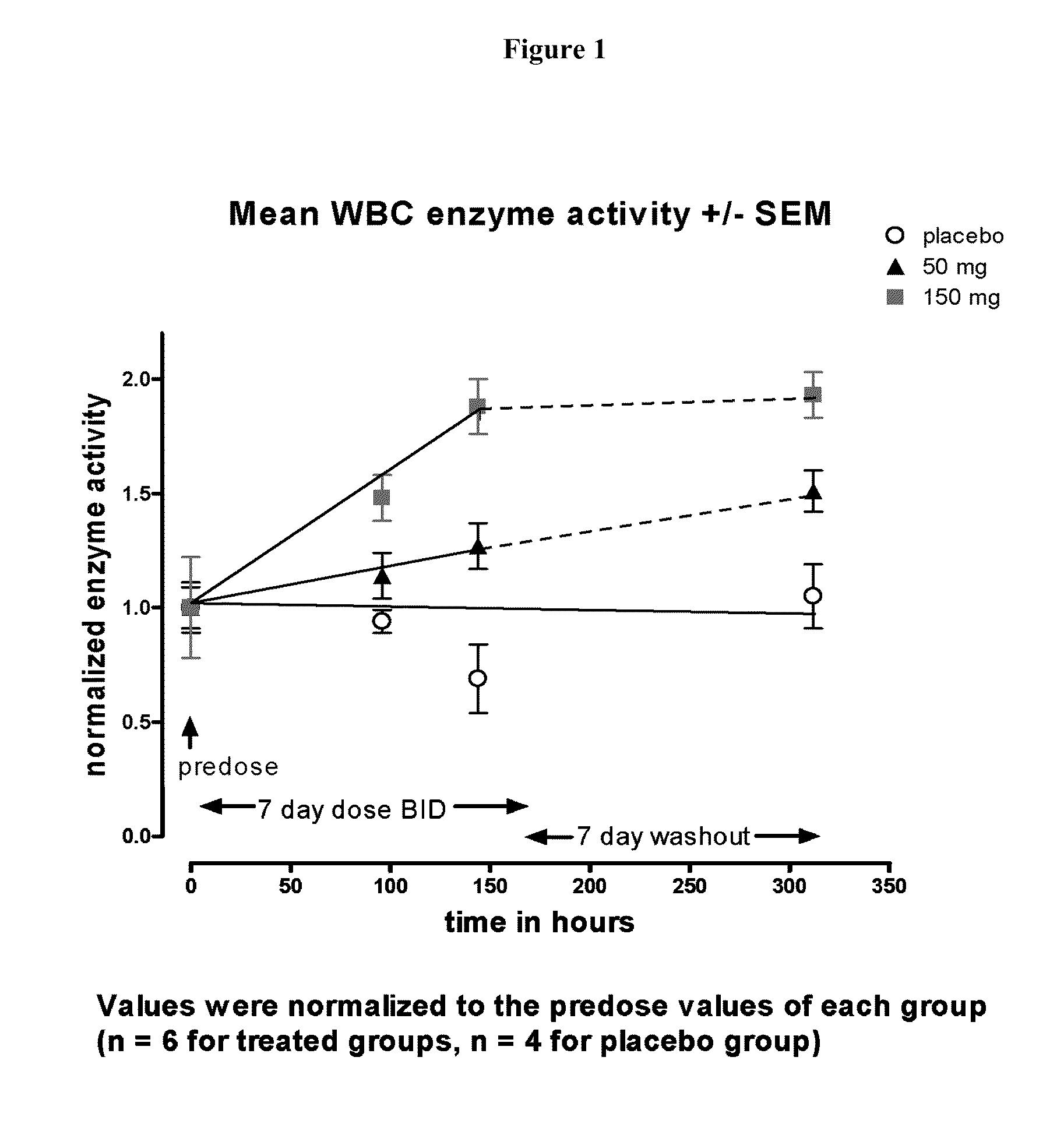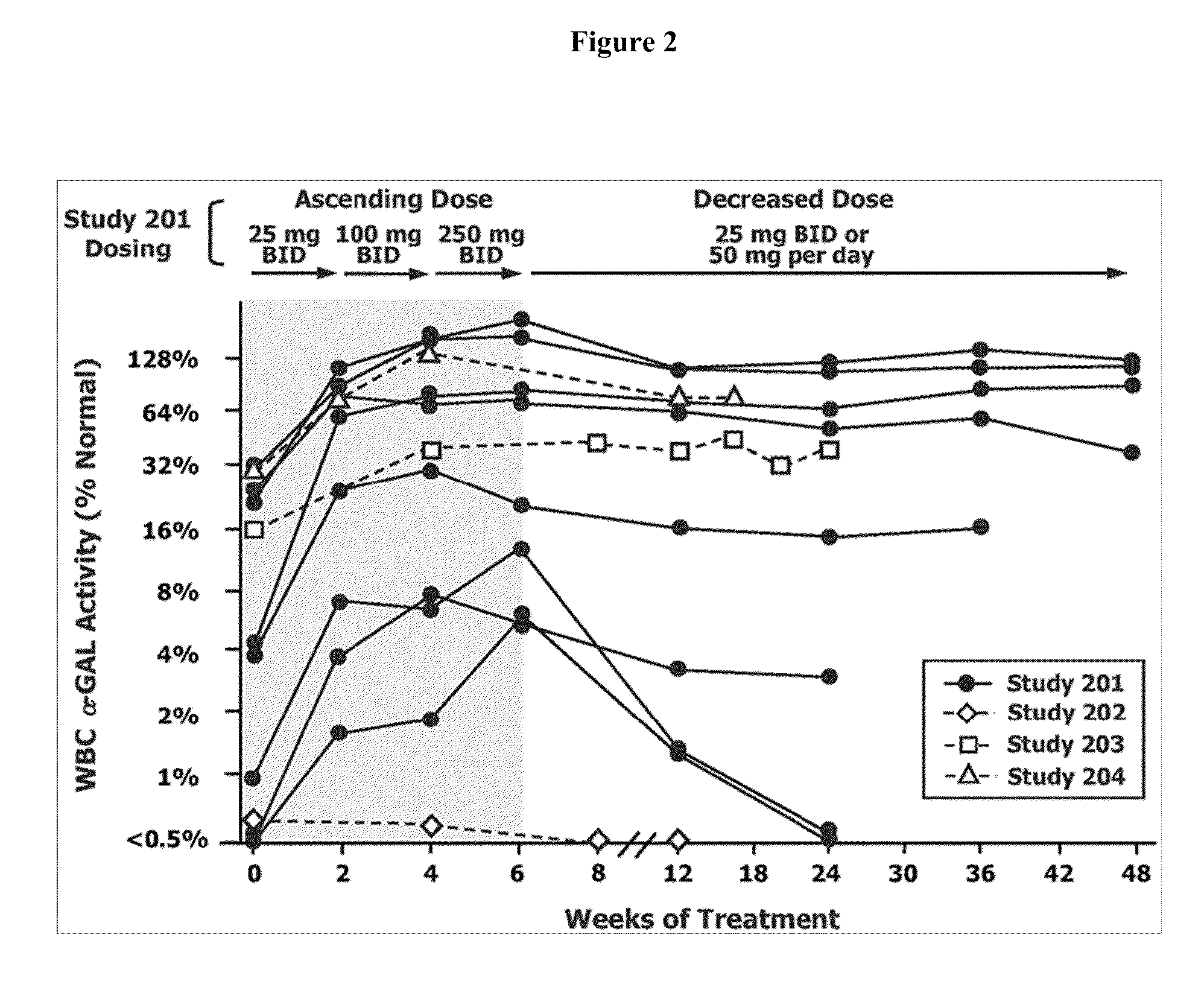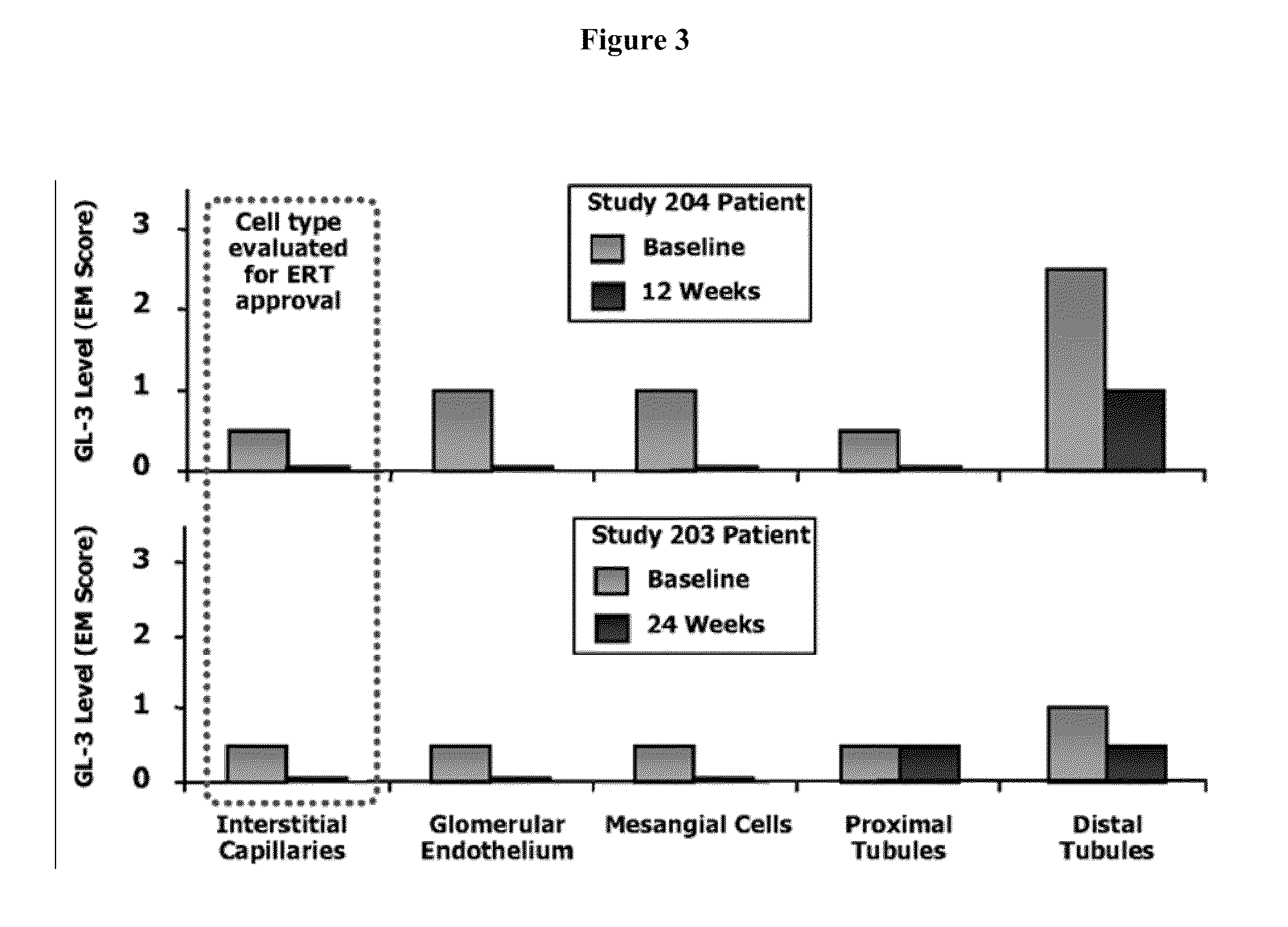Method for the treatment of fabry disease using pharmacological chaperones
a technology of fabry disease and chaperones, which is applied in the direction of drug compositions, peptide/protein ingredients, metabolic disorders, etc., can solve the problems of increased risk of heart attack or stroke, increased risk of ert, and many infusions, so as to increase the activity of -galactosidase and increase the activity of the protein in the individual
- Summary
- Abstract
- Description
- Claims
- Application Information
AI Technical Summary
Benefits of technology
Problems solved by technology
Method used
Image
Examples
example 1
Administration of DGJ to a Transgenic Mouse Expressing Human Mutant α-Gal A in an Endogenous Enzyme Deficient Background
[0114]Transgenic mice that exclusively express human mutant α-Gal A (R301Q) in an α-Gal A knock-out background (TgM / KO mice) were established and evaluated. This Example serves as a biochemical model to study and evaluate pharmacological chaperone therapy for Fabry disease, which is specific for those missense mutations that cause misfolding of α-Gal A.
Methods
[0115]Mice. Fabry R301Q Tg / KO mice were a gift from Dr. Robert Desnick. Male C57BL / 6 mice were purchased from Taconic Farms, Germantown, N.Y. and housed in wire cages at 4 mice per cage. All studies were conducted at 8 weeks of age and conducted under strict adherence to IACUC guidelines.
[0116]Drug Administration. For the α-Gal A assay, four groups of 10 male C57BL / 6 mice were dosed with 0, 1, 10 or 100 mg / kg / day IFG HCl in drinking water for 28 days. For the GL-3 assay, two groups of 6-7 male R301Q Tg / KO mice...
example 2
Administration of Single Dose DGJ to Evaluate Safety, Tolerability and Pharmacokinetics
[0124]This example describes a randomized, double blind, placebo controlled Phase I study of ascending single oral dose of DGJ to evaluate the safety, tolerability and pharmacokinetics of DGJ in healthy volunteers.
[0125]Study Design and Duration. This study was first-in-man, single-center, Phase I, randomized, double-blind, single-dose, placebo controlled, ascending dose study to evaluate the safety, tolerability and pharmacokinetics of DGJ following oral administration. The study tested 4 groups of 8 subjects (6 active and 2 placebo) who received a single dose of 25, 75, 225 and 675 mg of DGJ or placebo administered orally, in a dose-escalating regimen, with a minimal 1-week safety evaluation period between successive cohorts. Dose escalation to the next dose level (i.e., next group) proceeded following review of safety and tolerability of the previous group(s). Subjects were housed in the treatm...
example 3
Administration of Single Dose DGJ to Evaluate Safety, Tolerability and Pharmacokinetics, and Affect on α-Galatosidase A Enzymatic Activity
[0143]This example describes a randomized, double blind, placebo controlled Phase Ib study of twice daily oral doses of DGJ to evaluate the affects of DGJ on safety, tolerability, pharmacokinetics, and α-Galatosidase A (α-Gal A) enzymantic activity in healthy volunteers.
[0144]Study Design and Duration. This study was first-in-man, single-center, Phase Ib, randomized, double-blind, twice daily-dose, placebo controlled study to evaluate the safety, tolerability, pharmacokinetics, and α-Gal A enzymantic activity affects of DGJ in healthy volunteers following oral administration. The study tested two groups of of 8 subjects (6 active and 2 placebo) who received a twice daily-dose of 50 or 150 mg b.i.d. of DGJ or placebo administered orally for seven consecutive days, accompanied by a seven day follow up visit. Subjects were housed in the treatment fa...
PUM
| Property | Measurement | Unit |
|---|---|---|
| pH | aaaaa | aaaaa |
| pH | aaaaa | aaaaa |
| lysosomal α-galactosidase A activity | aaaaa | aaaaa |
Abstract
Description
Claims
Application Information
 Login to View More
Login to View More - R&D
- Intellectual Property
- Life Sciences
- Materials
- Tech Scout
- Unparalleled Data Quality
- Higher Quality Content
- 60% Fewer Hallucinations
Browse by: Latest US Patents, China's latest patents, Technical Efficacy Thesaurus, Application Domain, Technology Topic, Popular Technical Reports.
© 2025 PatSnap. All rights reserved.Legal|Privacy policy|Modern Slavery Act Transparency Statement|Sitemap|About US| Contact US: help@patsnap.com



